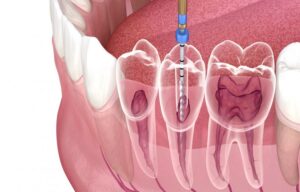HOW TO QUIT DRUGS?
Drug addiction is not inevitable. No matter the degree of addiction, it is possible to stop using narcotics.
Thanks to motivation and different withdrawal techniques, many people are able to move from drug addiction to a healthier life. In this article, we invite you to discover everything about quitting drugs!
The risks and dangers of drugs
All drug use carries risks. Different drugs, marijuana, cocaine, methamphetamine, as well as prescription drug abuse and illicit opioids, present different dangers. In addition to the addiction that drugs can cause, their use can also cause accidents, health problems, sleep problems, and more. Drug use can be stressful for the user and their loved ones. Just because some drugs are legal does not mean they are any less dangerous.
The pressures of life are ever-present. Building careers, buying homes, getting married, having children, and trying to do the right thing all come with a lot of pressure. To alleviate this stress, some turn to drugs to cope. Illicit or illegal drugs all have a range of harmful effects, both short and long term.
Short-term health harms are those that can occur as a result of an episode of drug use or misuse. These vary considerably depending on the narcotic used (type, amount, etc.) and may arise from the narcotic itself or from the manner in which it was taken.
Taking illicit drugs can cause respiratory illnesses such as chronic cough, wheezing, shortness of breath, or chronic bronchitis.
A number of illicit drugs are associated with mental health disorders. Regular users may also experience a range of social, legal, financial and emotional problems
The dangers of drugs
Traditionally, regular or habitual drug use has been seen as a coping crutch when in reality it only increases stress. Drugs can also cause other harms, including:
Prescription and illicit opioids: Highly addictive, these substances are the leading cause of overdose deaths; health effects include confusion, nausea, constipation, coma, and brain damage.
How does drug withdrawal work?
No matter how specific the withdrawals are, they all follow the same principle: Awareness, motivation, abstinence and follow-up. No withdrawal can be started if the person in a situation of addiction does not realize their dependence. Awareness is essential, it is the catalyst for withdrawal. It is when an individual realizes that drug addiction is ruining their life that they decide to get rid of it.
The desire to stop taking drugs inherently fuels motivation. The more people become aware of their addiction, the more motivated they are to cross the threshold of sobriety. In drug withdrawal, motivation can be considered the driving force. It is what allows you to go through the withdrawal process. It will take some to go through all the stages of treatment. It is the formidable weapon that confronts abstinence.
Once withdrawal has started, the patient refrains from consuming the drug for a given period. The duration of withdrawal is determined by the healthcare professional in charge of the treatment. This is the most painful stage of withdrawal. It is characterized by the appearance of withdrawal syndromes. The patient is confronted with symptoms such as anxiety, tremors, insomnia, headaches, nervous breakdowns and others. Depending on the withdrawal techniques and the nature of the addiction, the abstinence phase may be accompanied by taking medications or natural products to reduce the intensity of the symptoms due to withdrawal.
When the patient is resisting the effects of withdrawal as best as possible, he or she enters observation. That is to say, the professional in charge of the treatment sets up the follow-up. This consists of consolidating the withdrawal to avoid the risk of relapse. If the withdrawal was done in a residence, the patient may be authorized to resume his or her active life. However, he or she will have to practice a lifestyle conducive to change, dictated by the doctor’s advice. The patient can also join support groups to maintain his or her abstinence.
The different withdrawal treatments
Here we distinguish between treatments and withdrawal methods. If the methods consist of defining the rhythm of withdrawal (brutal or gradual withdrawal), the treatments determine the different techniques for approaching withdrawal. To achieve drug withdrawal, it is advisable to be accompanied by a healthcare professional.
The latter can be a general practitioner, an addictologist, a hypnotherapist or a homeopath. All these medical disciplines have a different approach to narcotic withdrawal. Conventional medicine very often accompanies the taking of medication when stopping the drug to relieve the patient of withdrawal symptoms. While, some alternative medicine such as hypnotherapy offers non-drug treatments. Withdrawal syndrome, unlike medication, is treated with relaxation techniques. Other disciplines also offer natural products and medicinal plants such as essential oils, roots and medicinal leaves to soothe the effects of withdrawal.
Better concentration and memory
One of the biggest benefits of getting sober is that it will help you improve your memory, focus, and mental clarity. Drugs can affect the strength of your focus as well as your long-term and short-term memory. By getting sober, your mind will be stronger and you will notice that your cognitive abilities are starting to come back to you.














Post Comment
You must be logged in to post a comment.